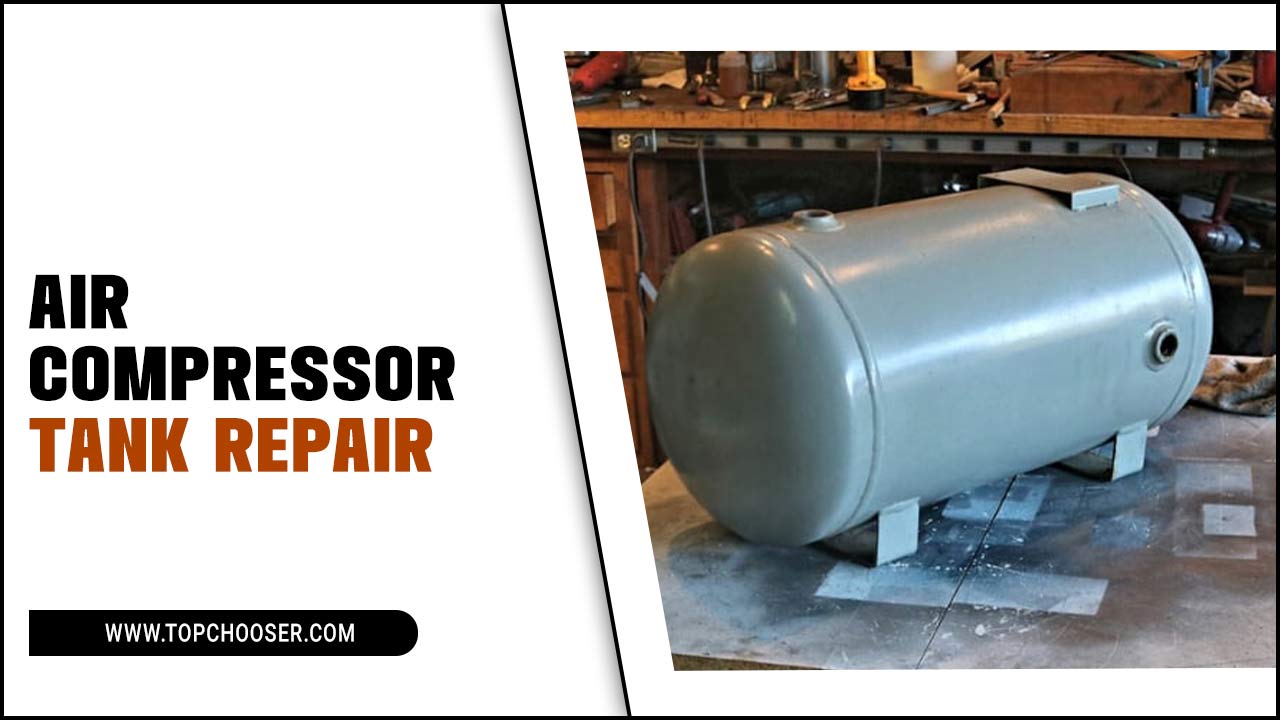Do you ever wonder if it makes sense to run ceiling fans when you’re not in the room? Maybe you walked into a room and felt the breeze from a fan. But then you thought, “Is it really worth it?” This question comes up a lot, especially on hot days.
Did you know that many folks leave ceiling fans running all day? They think it helps keep the home cool. But is that really true when nobody is around? Some people have strong feelings about this topic.
Imagine you come home after a long day. You want to feel the cool air as you walk into your room. But what if the fan kept spinning even when you weren’t there? Would that be a waste of energy? Or, could it actually make a difference? Let’s dive into the facts and find out if you should run ceiling fans when not in the room.
Should You Run Ceiling Fans When Not In Room? Insights & Tips

Should you leave ceiling fans running when you’re not there? Many folks wonder if it saves energy or helps cool a space. However, running a fan without people nearby won’t lower room temperature. It only moves air. Fans work best when you’re under them, helping to evaporate sweat and feel cooler. Think about this: fans can waste energy when nobody is enjoying the breeze. Turning them off when you leave could save you money on your electricity bill.
Understanding Ceiling Fans
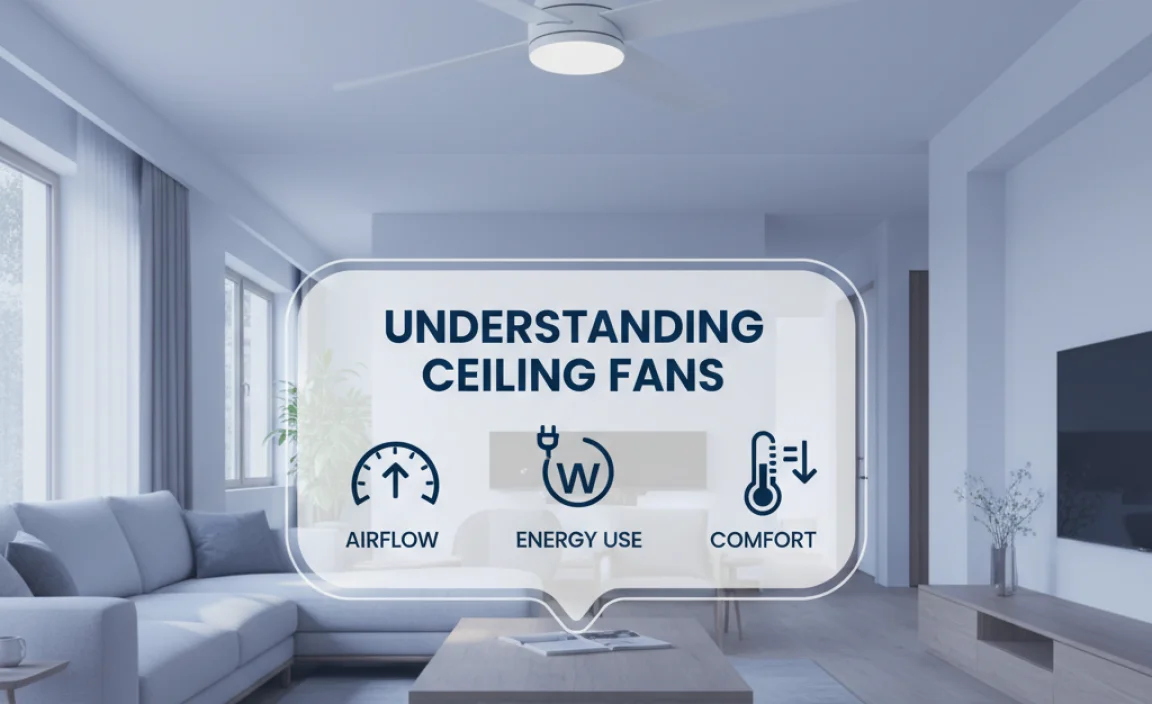
Explanation of how ceiling fans operate. Benefits of using ceiling fans for air circulation.
Ceiling fans work by spinning blades that push air around. This creates a breeze that helps you feel cooler in warm weather. The benefits of using ceiling fans include:
- Improving air circulation in the room.
- Helping you save energy and reduce cooling costs.
- Providing comfort by mixing warm and cool air.
Using a ceiling fan can make you feel better without needing to run the air conditioner all day. It’s like having a friend who makes the air nice and cool!
Should you run ceiling fans when not in the room?
No, it’s not necessary to run ceiling fans if you are not in the room. The fan cools people, not the air. Once you leave, it won’t help lower the room temperature.
Energy Efficiency Considerations
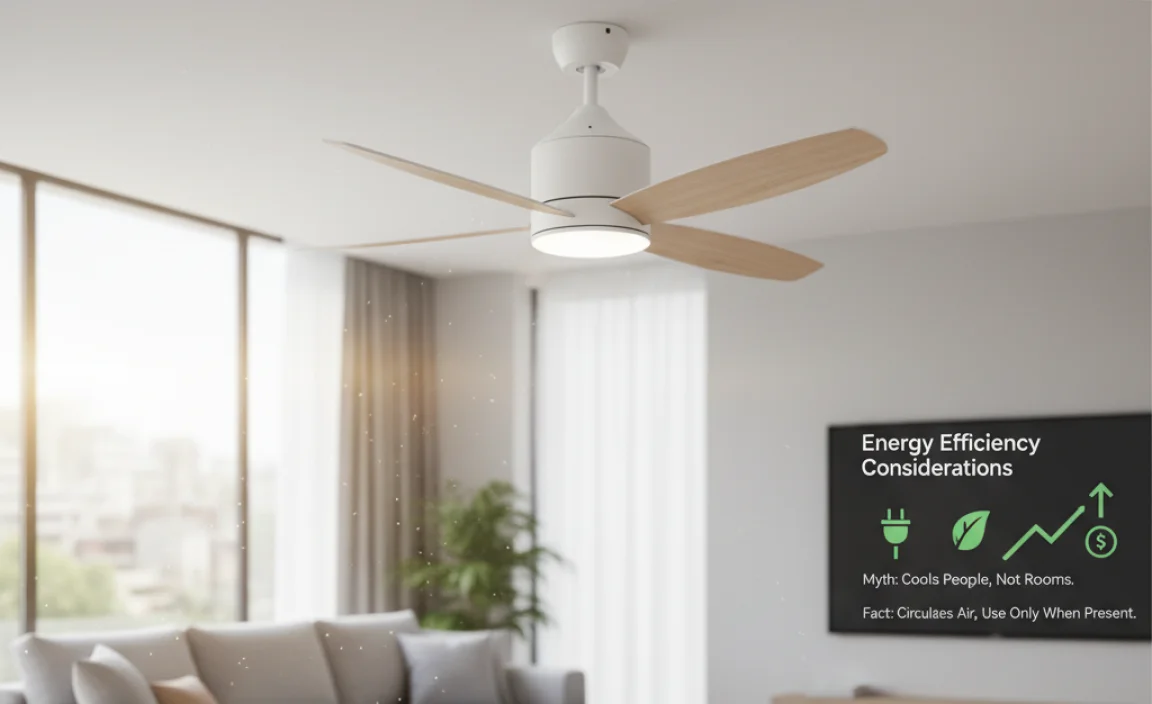
Impact on energy consumption when running ceiling fans. Comparison with air conditioning usage.
Running ceiling fans can feel like a cool breeze on a hot day, but does it really save energy? When fans spin in an empty room, they don’t cool the air. Instead, they make you feel cooler by moving air around. This can actually waste energy! Compare this with air conditioning, which uses much more power. A ceiling fan uses about 70 watts, while an AC can gulp down around 2,000 watts. If you’re not in the room, it’s like leaving the fridge door open—nobody wants that!
| Appliance | Power Usage (watts) |
|---|---|
| Ceiling Fan | 70 |
| Air Conditioner | 2000 |
When to Use Ceiling Fans
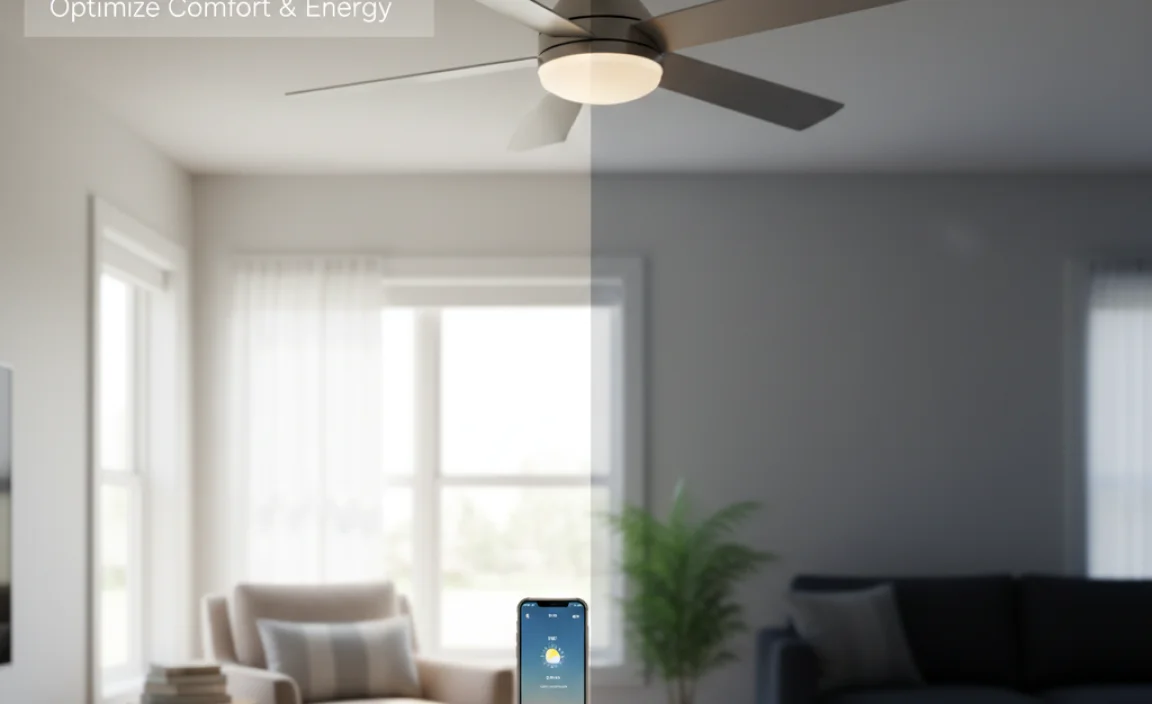
Best practices for using ceiling fans effectively. Situations where running fans is beneficial.
Ceiling fans can help us stay cool, but knowing when to use them is important. Use fans in the summer to make your room feel cooler. It helps move hot air up and make your space more comfortable. Running ceiling fans can also save energy by allowing you to set your thermostat higher. Remember, there’s no need to keep them on when you leave the room; it’s better to turn them off to save electricity.
When should you run ceiling fans?
Fans should run in warm weather, especially when you’re in the room. It’s best to turn them off when you leave. This can help lower your energy bill.
Best Practices:
- Use fans during hot days.
- Keep fans off when not at home.
- Combine with air conditioning for best results.
Potential Downsides of Leaving Fans On
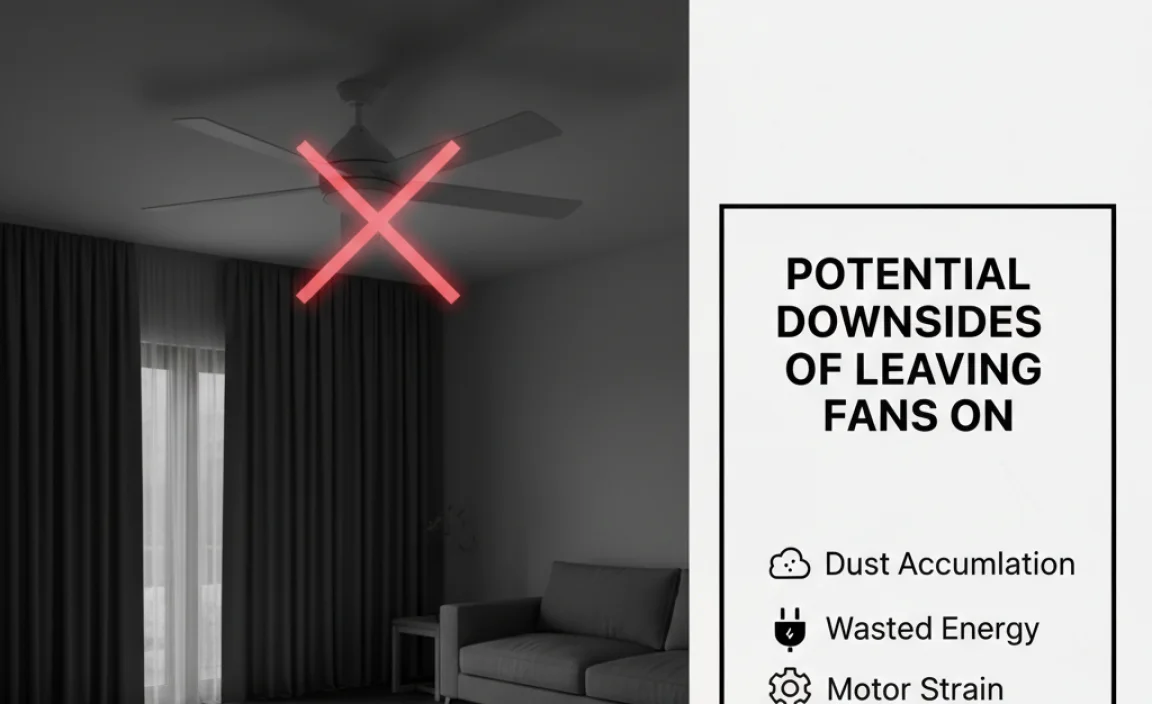
Discussion of energy waste. Effects on the lifespan of ceiling fans.
Leaving ceiling fans on when you’re not in the room is like filling your bathtub while the drain is open—wasteful and silly! According to energy experts, this can lead to unnecessary energy use. You could end up paying for air that no one is enjoying. Plus, constantly running can wear out your fan faster than a kid in a candy store. Fans typically last about 10 years, but leaving them on too often can cut that time short. So, unless you want to create a hurricane in your empty living room, it’s best to turn off those fans!
| Effect | Consequence |
|---|---|
| Energy Waste | Higher electric bills |
| Fan Lifespan | Shorter lasting fans |
Cost Analysis
Estimating electricity costs for running ceiling fans continuously. Longterm savings from efficient fan use.
Running ceiling fans all day can add to your electricity bill. On average, a ceiling fan uses about 70 watts. If you run it for just 10 hours a day, it can cost around $25 per year. However, using fans wisely can lower bills. Some studies show that energy-efficient fans save money in the long run. Investing in a good fan now can mean savings later. Remember, the goal is to keep cool, not break the bank!
How much can I save by using ceiling fans efficiently?
Using fans wisely can save money. By running only when needed, you avoid extra costs. This small change can make a big difference in your overall bill.
Alternatives to Running Ceiling Fans
Other strategies to keep rooms cool. Considerations for ventilation and airflow.
Keeping rooms cool without running ceiling fans is easy. You can try a few other methods. Open windows in cooler times of the day. This helps bring in fresh air. Using air vents also helps move warm air out. Plants can make the air feel cooler too. Here are some ideas:
- Close curtains or blinds to block sunlight.
- Use portable fans in rooms, if needed.
- Keep doors open to allow better airflow.
Try these tips to stay comfortable and save energy!
What are other ways to cool a room?
To cool a room, you can open windows at night, use portable fans, and close blinds during the day. Each method helps keep the air fresh and pleasant.
Tips for Optimal Ceiling Fan Usage
Recommendations for fan speed settings. Importance of fan direction adjustments.
To use ceiling fans wisely, start by choosing the right speed. For a light breeze, pick low speed. For hotter days, go with high speed. Don’t forget about the fan’s spin direction. In summer, fan blades should spin counterclockwise. This helps push cool air down. In winter, switch to clockwise to circulate warm air. Adjusting these settings can make your home feel comfortable year-round!
How should you adjust ceiling fan settings?
For best results, set your ceiling fan to low speed in gentle weather and high speed for heat. Rotate fan blades counterclockwise for cooling and clockwise for warmth.
Conclusion
In conclusion, you don’t need to run ceiling fans when you leave a room. Fans cool people, not rooms. When you’re not there, it’s wasteful to keep them on. Instead, turn them off to save energy and money. For more tips on staying cool and saving energy, check out articles on home cooling. Let’s be smart about our energy use!
FAQs
Here Are Five Related Questions On The Topic Of Whether To Run Ceiling Fans When Not In A Room:
Running ceiling fans when you’re not in the room is usually not a good idea. Ceiling fans help cool you down when you are there. But if you leave the room, the fan just uses electricity for no reason. It’s better to turn it off to save energy and money. Always remember to turn it off when you leave!
Sure! Please provide the question you want me to answer.
What Is The Energy Consumption Difference Between Running A Ceiling Fan Continuously And Only When Occupied In A Room?
Running a ceiling fan all the time uses more energy than only using it when someone is in the room. When you leave the room, turning off the fan saves electricity. This means lower energy bills for you! So, it’s best to use the fan only when you need it.
Can Leaving Ceiling Fans On In Unoccupied Rooms Affect The Overall Efficiency Of A Home’S Heating Or Cooling System?
Yes, leaving ceiling fans on in empty rooms can waste energy. Fans help cool you down by moving air. But if no one is there, the fan isn’t really needed. It’s best to turn off fans when you leave a room. This helps your heating or cooling system work better and saves energy.
How Does The Direction Of A Ceiling Fan’S Blades Impact Its Effectiveness When The Room Is Unoccupied?
When a ceiling fan is running and the room is empty, the direction of its blades matters. If the blades spin counterclockwise, they push cool air down. This is great when you’re in the room to feel cool. If the blades spin clockwise, they help pull warm air up, which is better for saving heat during winter. So, choose the right direction for when you’re there and when you’re not!
Are There Any Benefits To Running A Ceiling Fan When No One Is In The Room, Such As Air Circulation Or Reducing Humidity Levels?
Running a ceiling fan when no one is in the room doesn’t help much. Fans need people to feel cooler. When you’re not there, the air doesn’t get cooler. It won’t really help with humidity levels either. So, it’s best to turn it off when you leave.
What Are The Common Misconceptions About Using Ceiling Fans In Empty Spaces?
Many people think ceiling fans cool the air like air conditioners. But they don’t! Fans only move air around. In an empty room, you won’t feel cooler because there’s no one to feel the breeze. Also, leaving fans on in empty spaces wastes energy. So, it’s best to turn them off when you leave the room.

